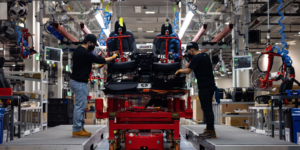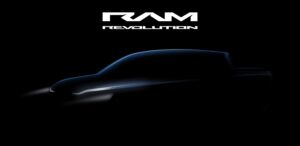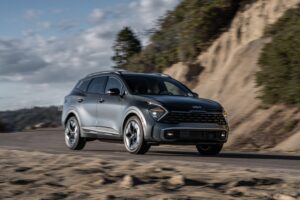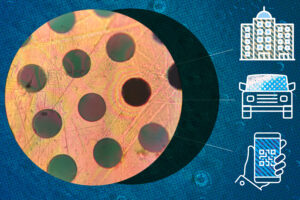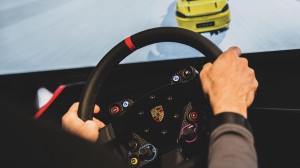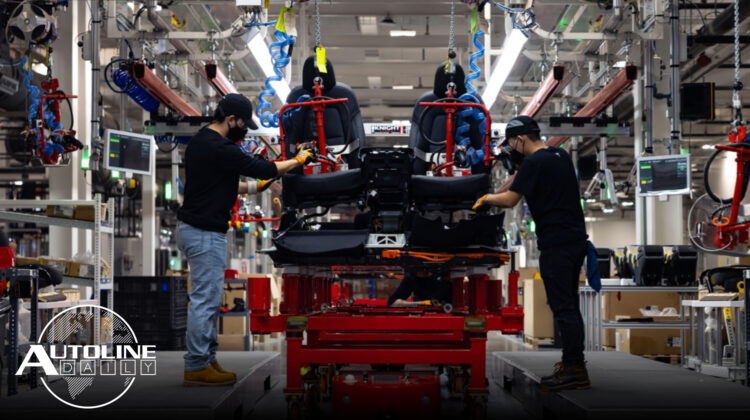
Listen to “AD #3257 – Tesla Pioneers New Assembly Technique, GM Dramatically Ramps Up EV Production, Biden Finally Says “Tesla”” on Spreaker.
Follow us on social media:
Runtime: 9:33
0:08 President Biden Finally Says “Tesla”
0:53 Tesla Pioneers New Assembly Technique
2:09 Park Your Hyundai & Kia Outside
3:34 EU Needs Millions More EV Chargers
4:34 Ram Teases EV Pickup
5:29 GM Dramatically Ramps Up EV Production
6:03 Details of Kia Sportage PHEV
6:54 MIT Develops Breakthrough Material
7:32 Hummer EV Frunk Is Perfect for Stowing Roof Panels
8:22 Porsche Allows You to Race on Your Favorite Streets
Visit our sponsors to thank them for their support of Autoline Daily: Bridgestone, Intrepid Control Systems and Schaeffler.
This is Autoline Daily, the show dedicated to enthusiasts of the global automotive industry.
PRESIDENT BIDEN FINALLY SAYS “TESLA”
Well, he finally said it. President Biden actually mentioned Tesla during a speech on domestic car manufacturing yesterday. And the President was quite complimentary. He praised Tesla for its EV investments in America and singled it out for being “our nation’s largest electrical vehicle manufacturer.” It’s the first-time Biden has ever let the word Tesla come out of his mouth, at least in public. Many people think that’s because Tesla and Elon Musk are rather anti-union. That, and the fact that Elon has insulted the President on several occasions. But Mr. Musk was pleased with yesterday’s remarks and replied to the President’s speech on Twitter with a smiley face emoji.
TESLA PIONEERS NEW ASSEMBLY TECHNIQUE
Speaking of Tesla, we discovered this little nugget while going through its latest financial earnings. You might call it an Easter Egg in the annual report. This picture shows assembly line workers at the plant in Texas attaching seats to the top of the battery pack for Model Ys. Let that sink in a sec. The battery pack is a structural member and is installed from underneath the car. So, if the seats are on top of it, they go in the car up through a hole where the floor pan would be. That likely means the battery pack includes the floor pan, the carpeting, the seats and the center console. Nobody in the history of the industry has ever assembled a car this way. But there’s a lot of advantages. Traditional seat installation can involve complicated machinery that has to twist and turn to get the seats through the door openings. That takes finesse, or you end up with scrapes and scratches. And that adds assembly time. The way it looks like Tesla is doing it, you just slap the carpet down, plop the seats in place, drop in the console, bolt it all down and you’re done. Clever assembly techniques like this help explain why Tesla continues to boost its productivity.
PARK YOUR HYUNDAI & KIA OUTSIDE
If you’ve got a Hyundai or a Kia, you may not want to park it in your garage. And in this case it has nothing to do with electric cars. Hyundai, Kia and NHTSA are urging 484,000 owners in the U.S. to park their vehicles outside and away from any other vehicles because of engine fire risks. A hydraulic electronic control unit can malfunction, causing a short that could result in the engine catching fire, even if it’s turned off. This includes the Kia Sportage and K900, as well as the Hyundai Tucson, Santa Fe, Santa Fe Sport and Santa Fe XL, which were built mostly from 2014 to 2019. Fortunately, it’s an easy fix. Dealers just have to install a new fuse for the circuit.
EU NEEDS MILLIONS MORE EV CHARGERS
The European Union wants to stop sales of new cars with IC engines by 2035. But if it wants people to buy EVs, it needs to significantly boost the number of charging locations. According to Ernst & Young and Eurelectric, a group that represents the electricity industry, Europe will need 65 million EV chargers to handle the 130 million EVs it expects to be on the road by 2035. That includes 9 million public chargers and 56 million residential ones. So far, there’s only 374,000 public chargers, and two-thirds of them are in just five countries. The researchers say half a million chargers need to be installed every year through 2030, and then that needs to ramp up to a million a year. On top of that, to handle the increase of electricity use, the report recommends that countries adopt smart charging solutions to handle the demand.
RAM TEASES EV PICKUP
It may be late to the party, but it may arrive as the best dressed. Ram announced it will come out with a battery electric version of the 1500 pickup in 2024. But that means it will not hit the market until years after Ford, Chevrolet, Rivian and others have their electric trucks on sale. There’s not a lot of details about the Ram EV, but you can see in this teaser picture that it features a body-on-frame setup with the battery pack mounted between the frame rails. Ram is also launching a website, RamRevolution.com, that provides consumers with updates, unique visuals and content, and even the chance to provide input as the truck is developed. Stellantis CEO Carlos Tavares says they’ll be able to watch what their competitors come out with and design something better. But that’s just a way of spinning the fact that they’re way behind the competition.
GM DRAMATICALLY RAMPS UP EV PRODUCTION
Meanwhile, General Motors is stepping on the gas, so to speak. It’s going to significantly ramp up production of its electric trucks and the Cadillac Lyriq. CEO Mary Barra says they’re going to make a total of 400,000 EVs this year and next. This year production is going up more than six times what it originally announced. GM was going to build 7,000 of them this year. Now it will make 46,000. And that means that next year it ramps up to 354,000 electric pickups and SUVs.
DETAILS OF KIA SPORTAGE PHEV
The all-new Kia Sportage debuted last year and now details are pouring in about the plug-in hybrid version, which goes on sale in the third quarter in the U.S. It comes standard with a 1.6L turbo 4-cylinder engine, like the Sportage Hybrid, but the PHEV has a more powerful motor; 67-kW vs 44-kW. It also has a larger 13.8-kWh battery pack, which Kia hopes will deliver a range of 32 miles or 51 kilometers. No word yet on the pricing.
MIT DEVELOPS BREAKTHROUGH MATERIAL
Engineers from MIT have developed a new polymer material that was once thought impossible to make. And it could have future applications in the auto industry. Polymers have always formed spaghetti-like molecules, but the new material is a 2D polymer that self-assembles into disks that are then stacked on top of each other. This creates a material that is stronger than steel, lighter than plastic, impermeable to gas or water and can be mass produced. MIT says it could be used as a coating to protect metal in vehicles or really any place where a high strength to weight ratio is important.
HUMMER EV FRUNK IS PERFECT FOR STOWING ROOF PANELS
Removable roof panels provide an awesome open-air feeling, but they’re not all that great if you don’t have a place to store them. So, GMC engineers decided to use the Hummer EV’s frunk. Each panel easily unlocks and slides up and away from the vehicle. They’re individually numbered, which is the order you stack them in, and then there’s a cover and straps to help keep them safe. The front I-beam can also be removed with a supplied wrench and socket and can be stored under the rear seat. And when you’re ready to put it all back together there’s a little diagram showing where each panel goes on the truck. Ford did something similar when designing the Bronco to get a leg up on Wrangler, which doesn’t have an in-car spot specific for roof panel storage, and Chevy has also done it with the last few generations of Corvette.
PORSCHE ALLOWS YOU TO RACE ON YOUR FAVORITE STREETS
Have you ever wanted to drive like an absolute bat-out-of-hell on your favorite streets around your city? I know I have. But fear of law enforcement and injury always prevent that. Well, sometime in the future you’ll be able to thanks to Porsche. It partnered with a Swiss startup to develop the Virtual Roads project, which uses a smartphone to record a route, software converts it into a 3D environment and then you can go racing. They say it takes less than an hour to digitize an 8 km or roughly 5 mile route. It’s compatible with a number of racing games and they’re working on incorporating actual data from the vehicle as well. Unfortunately, no word yet on when you’ll be able to get it.
But that’s a wrap for today. Thanks for joining us and we’ll be right back here again tomorrow.
Thanks to our partner for embedding Autoline Daily on its website: WardsAuto.com
Seamus and Sean McElroy cover the latest news in the automotive industry for Autoline Daily.




